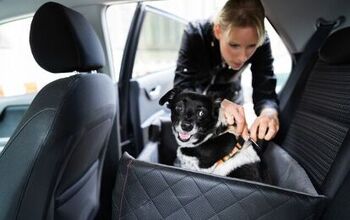Can Counterconditioning Help My Reactive Dog?
Caring for and managing a reactive dog can be incredibly frustrating. Your dog may be a sweet angel at home, but they suddenly evolve into a barking, growling, lunging whirlwind when out in public.Luckily, there is hope!Overcoming reactivity is a process that will not happen overnight. However, dog trainers and behaviorists have seen great success with positive reinforcement techniques like counterconditioning.This article will explore how counterconditioning works, the steps involved in the process, realistic timelines and expectations, and tips for a successful journey toward a calmer, more confident dog. Get started today!What is Counterconditioning for Dogs?Let’s start at the beginning—what exactly is counterconditioning, and why is it recommended for managing and treating reactive dogs?Counterconditioning is a behavioral modification technique that focuses on changing your dog’s emotional response to a specific stimulus.For example, some dogs feel fear and anxiety at the sight of another dog. This could be due to a lack of socialization, meaning they weren’t taught that other dogs can be friendly. It could also be a reaction to a past trauma, like having been attacked by another dog. In these situations, counterconditioning can be used to teach your dog that the sight of another dog leads to a positive experience.Why is this an effective approach for addressing reactivity? Reactivity, by definition, is an overreaction to a trigger. While this is often associated with fear or anxiety, some reactive dogs become overly excited. An overexcited dog may jump all over strangers not because they are trying to cause harm but because they are so excited to see them that they can’t control their response.If you have identified your dog’s triggers, you can use this training approach to teach them to respond in a new (and better) way.What Can Counterconditioning Be Used to Treat?Reactivity isn’t the only behavioral condition that can be treated with counterconditioning. This technique can be used to address a wide spectrum of situations in which a pet may be responding to a situation or trigger in an unwanted way.Some situations where it is commonly recommended include helping dogs overcome specific fears or phobias as well as managing or overcoming behaviors related to obsessive-compulsive disorder.Common fears that may be addressed with counterconditioning include: Fear of car ridesAnxiety when visiting the vetNoises (fireworks, thunder)Babies (especially the sound of crying)Strangers or other dogs in publicAllowing guests to enter their homePhysical triggers like cars or bicyclesDogs who dislike grooming, like brushing or having their nails trimmedIf you believe this approach may be helpful in your dog’s unique situation, we recommend speaking with a behaviorist.You can find professionals in your area by browsing the American College of Veterinary Behaviorists website list or the Animal Behavior Consultants Directory by the American Veterinary Society of Animal Behavior.












